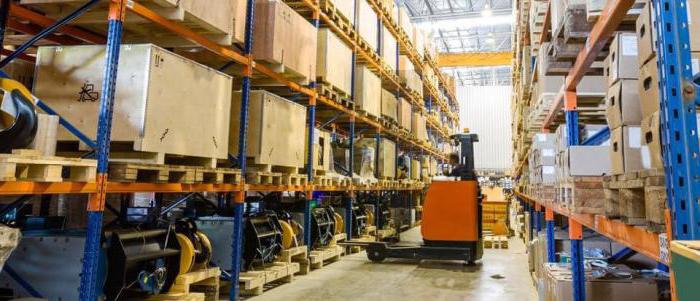Economists and marketers, analyzing any market, use a large number of different indicators. In order to be able to predict fluctuations in transaction volumes, the price elasticity of supply and demand is investigated.
Having learned the level of these indicators, it becomes possible to make an objective assessment of the impact of prices on the number of operations conducted in a particular market. This article will consider the price elasticity of demand, the formula, types and factors that can affect it.
Definition and essence
In textbooks on economic theory, a whole section is devoted to the issue of elasticity. This suggests that the topic is relevant and needs to be understood by people who want to become good economists or marketers involved in researching various markets.

First of all, we will understand what price elasticity of demand is. This indicator characterizes the level of reaction of consumers or buyers to changes in the price of a particular product.
For example, in the home appliance market they sell a stove of a specific model. Suppose that the price for it is 10,000 rubles. Suppose that it is expected that the price of such equipment will rise by 2,000 rubles. So, the price elasticity of demand shows at what level the demand for the plate of this model will change with such a change in price.
When analyzing supply and demand, as well as drawing up a financial plan, one cannot do without such an indicator, and it is an important component of the economic analysis of market relations.
What are the types of demand for elasticity?
The price elasticity of demand describes demand in several ways, which will be discussed later.
The first type is called elastic. In economic literature, this kind is often associated with the so-called luxury goods. Demand for them is characterized by the fact that it will decrease rapidly with increasing prices and at the same rate increase while reducing the cost of such products.

One can imagine, for example, gold jewelry. The more expensive the price of gold, the correspondingly more expensive is the price of jewelry. Not everyone can afford expensive purchases, so when jewelry prices go up, they will begin to refuse to purchase them. And vice versa, the cheaper gold will cost, the more people will be able to buy jewelry from it.
Second view - inelastic demand. It is characterized by a market in which essential goods are sold. With a change in the price of products, the demand for it will not change much. That is, almost all buyers will not be able to refuse to purchase the goods they need.
Examples of such products include personal hygiene items, some food products (for example, bread, cereals, meat, etc.) and other everyday things, the consumption of which does not change depending on the income received.
Single elasticity
The third type is demand with unit elasticity. It is characterized by the fact that with a decrease or increase in the price of goods, demand changes to a similar level in the direction of growth or decrease, respectively.
Such price elasticity of demand is characterized by a constant level of sales in value terms, regardless of the size of prices set for it.
The following type is called absolutely inelastic. It is associated with the market for goods, the demand for which does not depend on price. That is, whatever the price of the product, they will buy it.

For example, various medicines, which have no alternative, will always be bought.Such products are those types of essential goods that are presented on the market in only one form, and there is simply no other choice.
Typically, prices for such goods are regulated by the state with the aim of providing social protection and guarantees to low-income groups.
The latter is absolutely elastic demand. It is characterized by the fact that consumers are willing to give only a certain price for a product. If it changes, there is a complete rejection of such products.
Such price elasticity of demand for a product is rather a special case than a common rule. Often this looks like this: the manufacturer sets the price for a break-even point by the price of the goods.
Often, manufacturing companies receive government payments for such products so that such a business has at least some appeal. Raising the price level for such products means completely losing all customers.
Price elasticity of demand: calculation formula
The level of elasticity of demand is determined as a coefficient. His analysis allows us to draw conclusions about the market situation.
The coefficient of price elasticity of demand is equal to the following formula: Kce =% Is /% Itz, where:
- Kze - coefficient of elasticity;
- % Is- percent changes in volume
- % IT - percentage price changes.

The percentage changes can be calculated in the following way:
- % Is = (current demand - initial demand) / initial demand x 100%.
- % IT = (current price - starting price) / starting price x 100%.
Based on the simplicity of the formulas, it is easy to find out what the coefficient of price elasticity of demand is equal to. But after receiving the result, one must correctly determine what elasticity he describes.
How to understand the values of the coefficient?
So, suppose we calculated and received certain data. We learned what the price elasticity of demand is equal to. To decrypt the results, you can use the following table:
| Value | Type of demand |
| Kze> 1 | elastic |
| Kze <1 | inelastic |
| Kze = 1 | single elasticity |
| Kze = ∞ | absolutely elastic |
| Kze = 0 | absolutely inelastic |
Further, the analysis can be carried out according to the previous chapter, where each type of elasticity was described.

Factors of price elasticity of demand
A lot of things can affect elasticity, which, in fact, determine the essence of the market. But the following factors can be distinguished from them:
- Product Category
- Time.
- Substitutes.
We will analyze each one in order.
The first is the product category. Well, this factor is quite significant. There are such types of products, for example, that are used for diabetes.
Product category directly affects the elasticity of demand
Agree that a person will buy them regardless of whether they will rise in price or become cheaper, because his life depends on it. And there are many more such examples.

And on the other hand, consider fine wine. The higher the price, the less willing to buy it. This is the essence of this factor.
The time factor also has a significant effect on the level of elasticity of demand. The longer the time period that is considered, the more demand will be more elastic.
The effect of time on elasticity
This can be explained as follows. Imagine that you constantly buy the same sausage in the store. Do it regularly. Everything suits you: quality, composition and other characteristics of this product.
But once you come to the same store, and the sausage has become 30% more expensive. For your budget, this is an unbearable amount. In this case, you basically do not want to buy another, because you do not trust other manufacturers. Your current demand for this product is inelastic.
A day passes, then a second, third, week, and so on.Your favorite sausage does not get cheaper, and you begin to think about the fact that you can still afford to buy it, or you will have to try a similar product from another manufacturer for a lower price. Now your demand has become more elastic - you are ready to consider various options.
Such a simple example can explain the effect of time on the level of elasticity of demand.
If the product is not unique, then the demand will be elastic.
This statement is suitable for expressing the essence of the third factor.
Indeed, the more substitutes there are on the market, the more difficult it is to get a buyer to choose products from only one manufacturer at a dictated price.
Substitute products are intended to be similar products on the market that may have some excellent properties from the main product, but, in principle, bring the same satisfaction.

For example, you like Coca-Cola. Pepsi tastes no different and no different. If the producer dramatically raises the price of your favorite drink, then you can start drinking Pepsi out of savings. That is, any good that can easily replace another product is called a replacement product.
And in such a market, it is quite difficult for a manufacturer to impose its price on consumers, because of this, perhaps, customers will go to competitors. The level of competition in markets where there is no uniformity of goods and there are many manufacturers who make similar products is, if not ideal, then with a high level of competition and fair prices.
The main thing is to draw the right conclusions.
Analyzing any economic indicator, one cannot rush and draw hasty conclusions. Once only the coefficient of price elasticity of demand has been calculated, it is impossible to try to decipher it and identify certain signs of the market.
To compile a complete analysis of the market, you need to calculate a similar coefficient on the proposal, the level of competition, government regulation, purchasing power of consumers and many more different indicators. Only after this can we draw conclusions worthy of respect and make various decisions on conducting business using the coefficient of price elasticity of demand.
And do not forget that the science of economics is only accurate at first glance. After all, the decision made today may turn out to be wrong tomorrow.
